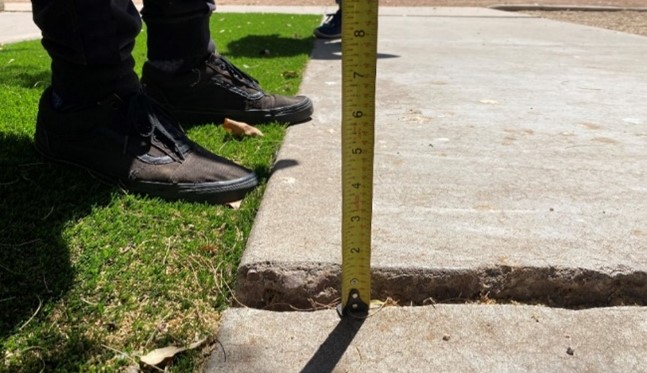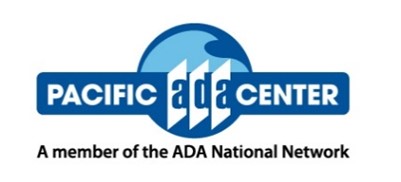(Printer-friendly PDF Version | 483 KB)
(Large Print PDF Version | 473 KB)
(Spanish Version)

What Is an ADA Coordinator?
Title II of the Americans with Disabilities Act (ADA), a federal civil rights law, protects individuals with disabilities from discrimination when they use or participate in state and local government services, programs, and activities. A government agency covered by Title II is known as a public entity.
Under the ADA, a public entity with 50 or more employees must have at least one “responsible employee” to coordinate its efforts to comply with and carry out its ongoing responsibilities under Title II. The responsible employee is often called the ADA Coordinator. The public entity must make the name, office address, and telephone number of this employee available to all interested persons. Although only one ADA Coordinator is required by the law, all state and local government employees are covered by Title II and must comply with the ADA’s requirements. Larger public entities often have more than one ADA Coordinator (e.g., human resources, facilities, etc.).
Public entities that receive federal funding are also covered by Section 504 of the Rehabilitation Act of 1973 and must have a 504 Coordinator as well. Often, public entities have one person serve as both the ADA and 504 Coordinator. References to the ADA Coordinator below include the ADA/504 Coordinator.
What Are the ADA Coordinator’s Responsibilities?
Overall, an ADA Coordinator must make sure that the public entity they work for meets its Title II responsibilities. They are the lead resource for accessibility and disability nondiscrimination regulations and should work with their public entity to comply with all Title II requirements, including those described below.
-
Complaints and Grievance Procedures
A public entity must adopt and publish a complaint or grievance procedure that members of the public can use. The ADA Coordinator or their designee must investigate and quickly resolve all complaints received about the public entity’s failure to comply with its Title II responsibilities.
-
General Non-Discrimination
People with disabilities must have an equal opportunity to participate in and benefit from all the programs, services, and activities a public entity provides in the most integrated setting possible.
To avoid discriminating against people with disabilities, a public entity must modify its policies, practices, and procedures when needed. A “reasonable modification” is not required when a public entity can show it would “fundamentally alter” the nature of its service, program, or activity. For example, it could be a fundamental alteration to allow a service dog into a city animal shelter for rabbits because the rabbits view dogs as predators and would be stressed. Reasonable modification requests do not need to be in writing or use specific words.
-
Notice
All public entities must publish a notice to the public that includes information about Title II of the ADA and how it applies to its programs, services, and activities. It should also list the ADA Coordinator’s name and contact information. Public entities can choose how to provide this notice, including public postings or through their website.
-
Self-evaluation
A public entity of any size must review its services, policies, and practices to determine if they violate Title II and modify those that do.
During its self-evaluation process, the public entity must allow all interested persons, including people with disabilities and representatives of disability organizations, to provide comments.
After the self-evaluation is complete, public entities with 50 or more employees must keep for at least three years a list of the interested persons and a description of the areas reviewed and any modifications made. Public entities must continue to comply with Title II even after the self-evaluation is complete.
-
Facility Accessibility and Program Accessibility
Public entities must design and construct all new and altered buildings and facilities, like parking lots, in compliance with either the 2006 ADA Standards for Transportation Facilities or the 2010 Standards for Accessible Design. Buildings and facilities constructed before the ADA went into effect are not required to comply fully with the ADA Standards. However, no facilities are considered “grandfathered,” no matter when they were built.
All public entities’ programs - but not all their buildings (as discussed above) - must be accessible. Program accessibility means programs, services, and activities provided by a public entity, when viewed as a whole, must be accessible to and usable by people with disabilities. For example, if a public entity has an older building that is not accessible, it can provide an activity at one of its accessible buildings.
-
Transition Plan
If public entities with 50 or more employees need to make structural changes to existing buildings, facilities, or their public rights-of-way to meet the program accessibility requirement, they must develop a transition plan that lists any accessibility problems or barriers and the structural changes needed.
The public entity must allow all interested persons, including people with disabilities and representatives of disability organizations, to provide comments during the transition plan’s development.
The transition plan must include a timeline for completing the activities and the official responsible for carrying out the plan. Although public entities are not required to update their transition plans under the Title II regulations, an updated transition plan is often required by court settlements or to receive state and federal funding.
-
Effective Communication
In all programs, services, and activities of a public entity, communication with individuals who have vision, hearing, and/or speech disabilities must be as equally effective as communication with individuals without disabilities. Auxiliary aids and services such as accessible written materials, sign language interpreters, and real-time captioning can be used to provide effective communication. Effective communication requests do not need to be in writing or use specific language. Public entities must give “primary consideration” or preference to the auxiliary aid or service requested by the person with the disability and must not charge a fee for an aid or service.
Effective communication also applies to a public entity’s website. Although there are no web accessibility standards, many Title II entities choose to follow the Web Content Accessibility Guidelines (WCAG) and/or Section 508 of the Rehabilitation Act which refers to WCAG.
A specific auxiliary aid or service may not be required if it’s an undue financial or administrative burden for a public entity to provide it. For example, a blind resident asks to receive a braille copy of every city document. However, proving something is an undue burden can be very difficult because all of a public entity’s financial and other resources must be considered.
Does Title III of the ADA Require ADA Coordinators?
No. While not required, a private business or nonprofit covered by Title III of the ADA may choose to have an ADA Coordinator. These ADA Coordinators should coordinate and assure compliance with all Title III requirements.
Resources for ADA Coordinators
-
U.S. Department of Justice Resources on ADA Title II
https://www.ada.gov/resources/?filters= -
ADA Best Practices Tool Kit for State and Local Governments
https://archive.ada.gov/pcatoolkit/toolkitmain.htm -
Guidance on Web Accessibility and the ADA
https://www.ada.gov/resources/web-guidance/ -
ADA Title II Action Guide for State and Local Governments
https://www.adaactionguide.org/ada-title-ii-requirements#introduction -
Pacific ADA Center
https://www.adapacific.org -
ADA National Network
https://adata.org
|
Content was developed by the Pacific ADA Center and is based on professional consensus of ADA experts and the ADA National Network. |
|
|
Toll Free: 1-800-949-4232 (V/Relay) Local: 510-831-6714 (V/Relay) |
The contents of this factsheet were developed under grants from the National Institute on Disability, Independent Living, and Rehabilitation Research (NIDILRR grant numbers 90DPA0006 and 90DPAD0004). NIDILRR is a Center within the Administration for Community Living (ACL), Department of Health and Human Services (HHS). The contents of this factsheet do not necessarily represent the policy of NIDILRR, ACL, HHS, and you should not assume endorsement by the Federal Government. |
|
© Copyright 2023 ADA National Network. All Rights Reserved. May be reproduced and distributed freely with attribution |
|

.png)





